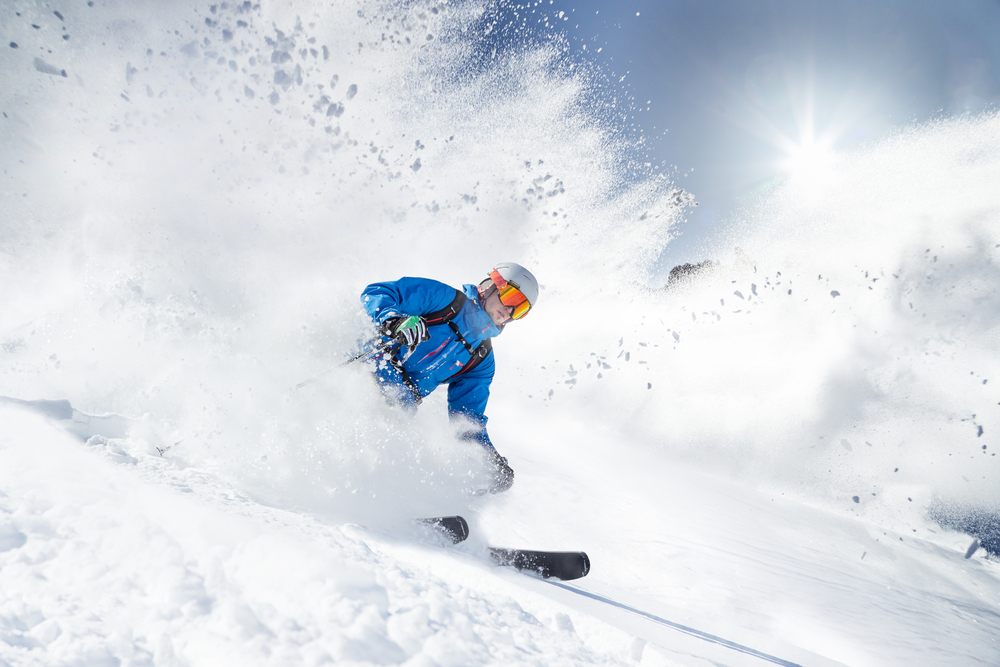Winter is on its way, and skiers and snowboarders are preparing to hit the slopes. For those concerned with safety, which sport is the better bet?
It’s that time of year when winter sports enthusiasts are dusting off their skis and snowboards in anticipation of hitting the slopes. However, as you polish your equipment and prepare for the exhilaration of gliding down the mountain, it’s important to be aware of the risks both sports pose.
Even the most experienced skier or snowboarder will sometimes take a spill on the slopes, leading to broken bones or torn tendons. Yet the statistics show that skiers and snowboarders generally face different types of injuries. We’ll take a look at the potential risks of both sports so you can make an informed decision when it comes to your safety this winter.
SNOWBOARDING: WRIST AND ANKLE INJURIES
According to a study published in the American Journal of Sports Medicine, the most common injury suffered by snowboarders is a broken wrist — in fact, 40% of all snowboarding accidents result in a wrist fracture. The wrists are especially vulnerable to breakage because snowboarders often use their hands when they want to stop a backward or forward fall.
Snowboarding jumps that go awry can also lead to a broken ankle. The hard impact of the landing can place excessive pressure on the joint, causing one or more of the bones to fracture. If treated early, the most common type of ankle fracture — occurring in the talus bone — can generally be repaired without surgery through casting and rest.
Compared to skiing, snowboarders do experience more injuries. When the National Ski Area Association sponsored a 2011 report on skiing versus snowboarding injuries, the study documented that snowboarders have a 50% to 70% higher chance of getting injured than skiers. Yet the study also found the risk of dying from an injury was one-third higher for skiers than for snowboarders.
SKIING: KNEE AND SHOULDER INJURIES
When skiers take a bad tumble, they’re most likely to end up with serious knee trauma. In fact, knee injuries make up approximately one third of all ski injuries. Tears in the knee’s medial collateral ligament (MCL) generally occur as skiers try to stop or slow down using the snowplow position, which requires bringing the front tips of the skis together. Fortunately, an MCL injury often doesn’t require surgery and can heal with physical therapy and a brace.
Another common knee injury for skiers — a tear of the anterior cruciate ligament (ACL) — frequently needs to be remedied with surgery. Trauma to the ACL usually stems from three actions that cause a skier to fall. If the skis become embedded in the snow, skiers cannot stop their forward momentum and their knees bend, causing the ligament to tear. Other times, a skier’s rigid boot can push the tibia (the lower leg bone) away from the femur (the large bone above the knee). The knee bones then disconnect and the ACL may stretch or tear. Thirdly, when a skier falls backward the skis may get stuck in the snow, causing a rupture as the knee is suddenly jarred out of place.
Knees aren’t the only joints skiers injure. Those who fall hard on their shoulders can suffer a painful dislocation. This occurs either as the shoulder hits the ground, or as the joint is wrenched out of its socket when a skier attempt to break the fall with their hands or arms. In the case of a dislocation, the joint often needs to be reset with the help of an orthopedic specialist.
PREVENTING SKIING AND SNOWBOARDING INJURIES
Whether you decide to go skiing or snowboarding this winter, you should take precautions to avoid serious injuries to the knees, wrists, ankles, and shoulders. Here are some tips to keep in mind as you hit the slopes:
- To prevent ACL tears, focus on strengthening your hamstring muscles and practice skiing in a more flexed position.
- Switch to shorter skis that reduce the pressure on your legs and protect against tibia and fibula fractures.
- Skiing on slopes familiar to you lessens the chance of an injury since it means you won’t have to use the snowplow position to suddenly stop short of an unexpected obstacle.
- When snowboarding, wear wrist guards to protect against wrist fractures.
- As with any exercise, be sure warm up your tendons, muscles, and ligaments with 5-10 minutes of stretching before you hop on the chairlift.
Going skiing or snowboarding is a great way to take the chill out of the winter months. By taking the proper precautions and following the guidelines above, you can ensure that you have a fun and safe season gliding down the mountain.
If you do experience an injury from either sport, it’s important to visit an orthopedic expert for a proper diagnosis and treatment plan. Call or book an appointment at the New Jersey Bone & Joint Specialists’ Hoboken office today.


